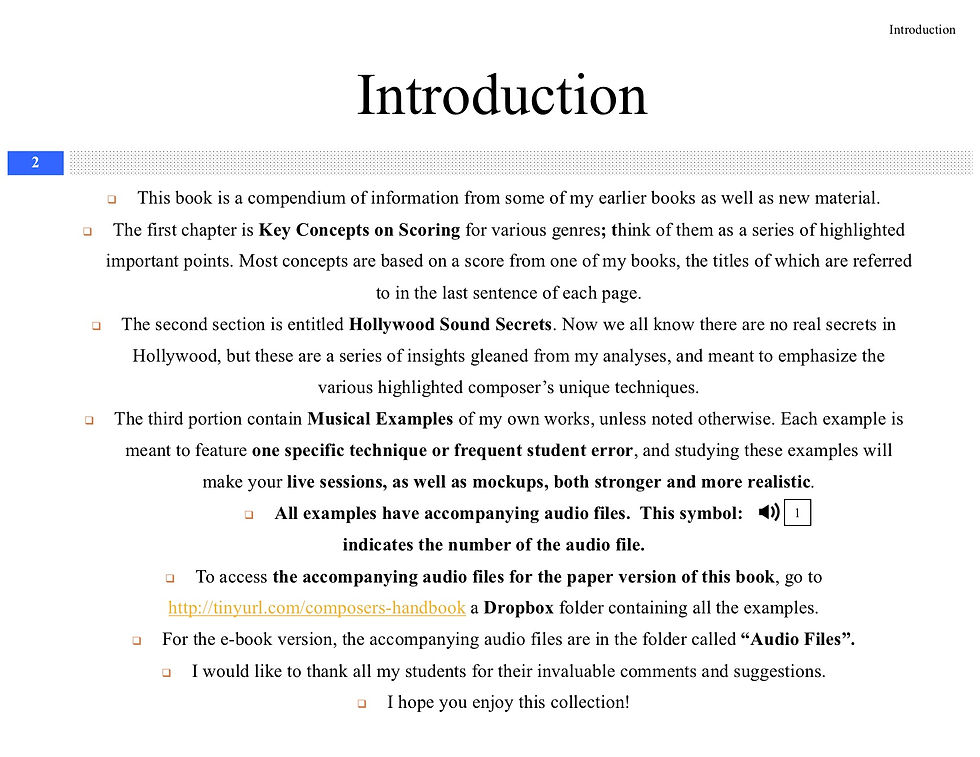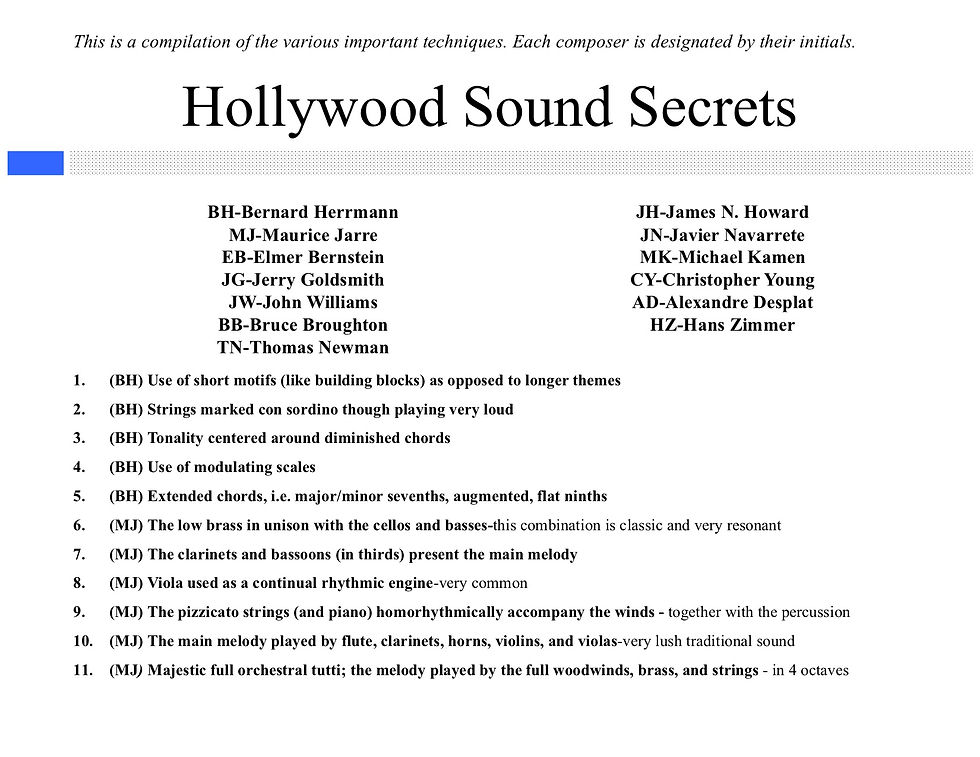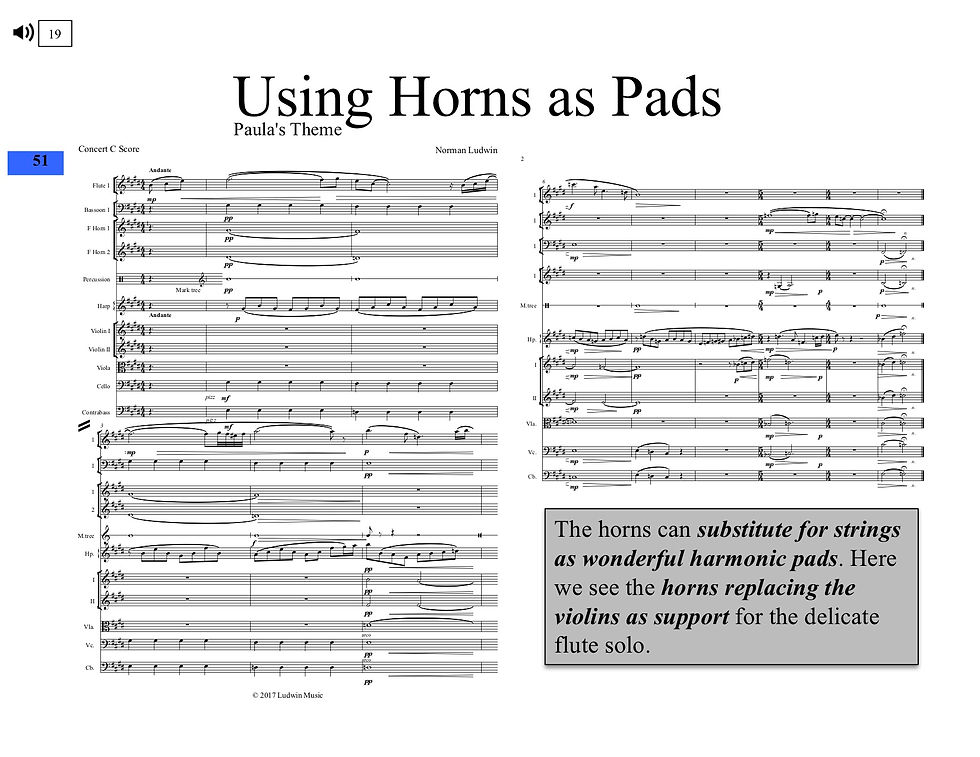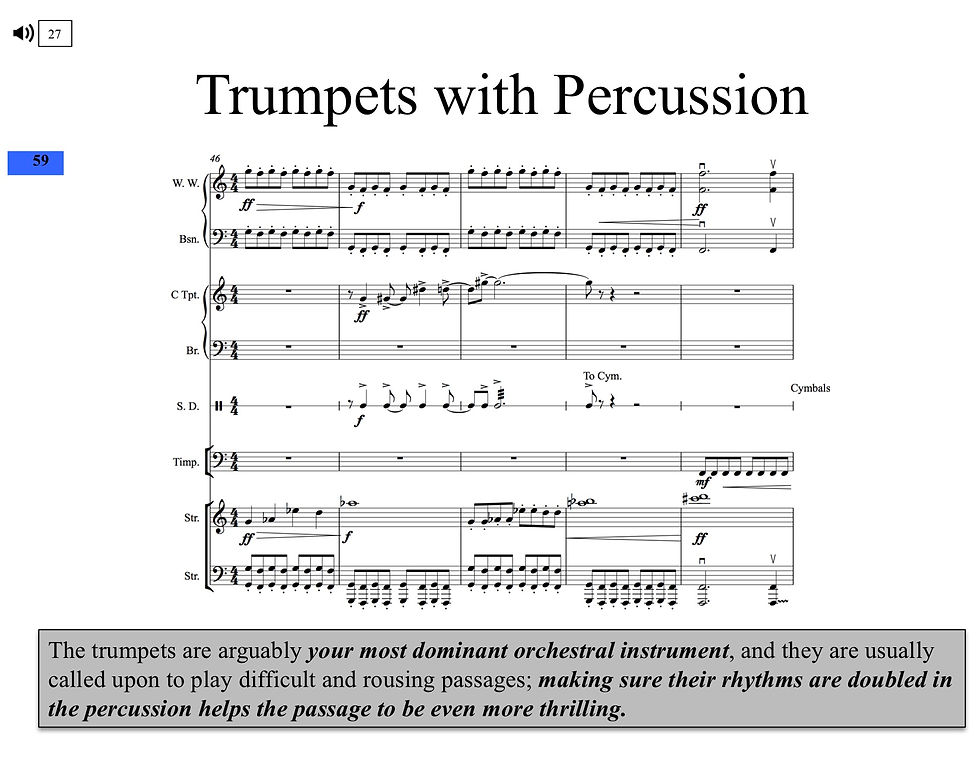top of page


Scoring Tips cover_edited

Table of contents2

selections from Tips

selections from Tips3

selections from Tips4

selections from Tips5

selections from Tips6
Scoring Tips
REVIEWS:
"This is a great little collection of scoring tips for any orchestral student! Its presented in a very concise and digestible format. The first two sections contain both references and analysis observations of techniques used by various famous composers. The later third (really the second half of the book) is my favorite with many musical examples each featuring a specific technique to study. The orchestral examples are each short enough making it easy, very easy, to study the specific techniques being presented. It includes audio examples as well however each example is short enough that it makes each of these ideal candidates to mock up yourself for study. In some ways, this reminds me of the way Rimsky Korsakov presented short orchestral examples for demonstration purposes in his Orchestration book. Its a great way to learn in "bite-size" pieces. If you're studying orchestration, I think you'll find this little collection quite a tasty treat." -Gregory M.
"Hey Norman, on impulse bought your book and am glad I did. Lots of great tidbits in there, it's almost a crib-sheet for scoring. The style section would be a great :42 read before you dove in to composing in any of the genres you touched on." -Stuart K.
Scoring Tips
This book is a compendium of information from some of my earlier books (primarily my Anthology Volume Three) as well as new material.
The goal of the book is to put in one place a list of my Key Concepts for various film genres, my Hollywood Secrets techniques, a range chart with Power Ranges indicated, and 29 examples of useful scoring techniques and common orchestration mistakes.
Includes audio for all examples.
Contents:
KEY CONCEPTS
Americana Small Town
Prairie
Horror
Dramatic Jazz Score
Thriller
Emotional Family
Adventure
Western
Dark Fantasy
Supernatural
Moody/Suspenseful
Science Fiction
Animation/The Incredibles
Animation/Ratatouille
Animation/ UP
Military
Action
HOLLYWOOD SOUND SECRETS
RANGES
MUSICAL EXAMPLES
Violin Doublings
1st Violin and Viola Doubling
Violins in Close, and Distant, Spacing
1st Violin and Cello Doubling
Letting the Cello have the Melody
Using the Viola as the Rhythm
Using the Strings Lower Range
Rhythmic Figures for Strings
Pizzicato
Solo Strings versus Tutti Strings
Constant Writing
Writing with Breaks
Using the Strings Lower Range
The Bass Sound
All the Bass Instruments Together
Solo Flute versus Tutti Woodwinds
Oboe’s Range
Horns Written Too High
Correctly Written Horns
Using Horns as Pads
Good, and bad, Trumpets
Staggering the Woodwinds Entrances
Switching Parts too Often
Including Breaks for Breathing
Dividing and Dovetailing the Parts
Woodwind Runs
Winds with Brass
Trumpets with Percussion
Brass with Percussion
Piano with the Featured Melody
FIND THE MISTAKES!
73 pages (Includes a DropBox link for the audio examples).
bottom of page